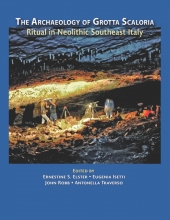Appendix 1: L’Eneolitico di Manfredonia nella Grotta di ‘Occhiopinto’
Appendix 2: The Heritage of Two Subsistence Strategies
Appendix 3: Cult of the Waters
Appendix 4a: Preliminary Report on 1979 Excavations at Scaloria Cave near Manfredonia, Italy
Appendix 4b: Report on 1980 Research of 1979 Excavation of Grotta Scaloria at Manfredonia, Southeast Italy
Appendix 4c: The Scaloria Cave
Appendix 4d: Extracts Regarding Scaloria from "The Language of the Goddess" and "Civilization of the Goddess"
Appendix 5: Interviews with Santo Tiné, Luigi Coppolecchia, Giulio Perotti, and Sergio Duda
Appendix 6a-b: Letter from Enrico Davanzo to Santo Tiné
Appendix 7: Daybook 1979
Appendix 8: Field Catalogue: 1979 excavation season
Appendix 9: Raw data from the 1980 lithic study
Appendix 10: Portfolio catalogue
Appendix 11: Prehistoric Animal Remains from Grotta Scaloria- Raw Data
"We have worked under the moral obligation incumbent on all archaeologists to publish what has been excavated. Perhaps that responsibility is even greater when the site is as significant as Scaloria Cave. Nevertheless, excavation is destruction, and without publication (electronic or otherwise) the research is lost. In this instance, and because Scaloria Cave was excavated by UCLA and the University of Genoa so many decades ago, its approach in the 1970s typifies a joint archaeological project of its era. Thus, the Save Scaloria Project ( SSP ) provides an opportunity to enter into the context of that time and even glimpse its historiography; indeed, the archaeological history of Scaloria Cave reveals a great diversity of archaeologists over some 80 years and several national traditions. To that end, not the least important feature of this publication is the historical documentation reproduced in the appendices. This includes the observations of many of the explorative teams who first ventured into the cave's depths. It is included both because it is the original and often the only record of important firsthand observations on the cave, and because it gives a sense of how each generation of archaeologists explored, observed, and understood the cave. A rich visual archive, hundreds of photographic images of 1978-1980, is also accessible (Appendix 10, Portfolio)."
-Ernestine S. Elster
